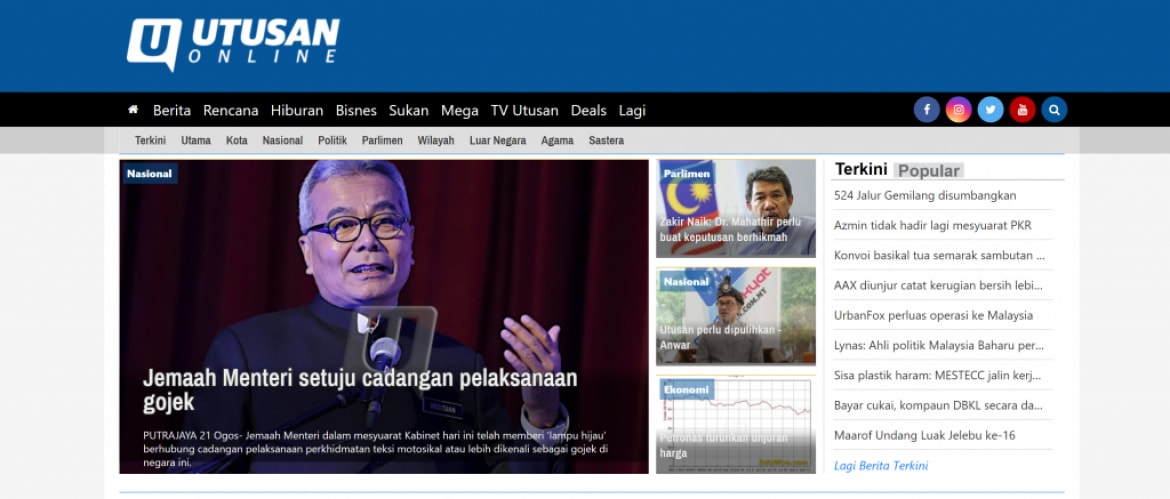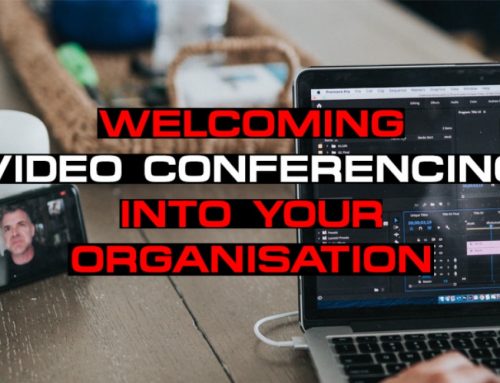It takes a lot to stay ahead – much less keep up – with the fast pace of the business world. After 80 years of championing the voices of our local community, the national newspaper – Utusan Melayu (Malaysia) Berhad – is facing a shutdown. From an unresolved debt of nearly RM1.2 million and inability to liquidate assets to owing its employees months of salaries, Utusan is in deep – where is their way out? Raising their prices by RM0.50 in an attempt to reduce their monthly deficit – is this enough?
Their crisis can teach us a thing or two about industry change and keep up with trends. What can businesses learn from Utusan’s predicament to avoid this situation?
1. Change is hard – what issues would you face and how can you avoid them?
For 80 years, Utusan has churned out millions of copies of newspapers but that number has been in decline for the past 10 years. Infamous for bias towards certain politicians and political climates, social fluctuations dictated a decline in readership because of this. Why is change so hard?
• Change affects everyone in your team
From the new intern to the Director, everyone is affected in some way. A change in leadership style would mean altering up your response and work ethics to match. A change in organizational structure would mean getting used to a new culture and chain of authority. Changing your output medium would mean learning new software – be it for product sales, marketing, and so on with clients or internally.
SOLUTION: Hold weekly meetings with an open discussion on what has worked and what hasn’t. Permit your employees the opportunity to voice their fears and find ways to help them combat them. Share the company’s reasons for the change and work towards materializing the vision.
• Job security is threatened
Managers tend to resist change for the simple reason of protecting their teams. Hearing about possible change induces fear – “Does change mean we lose our jobs?”. Employee motivation will drop as they internalize the effects of a change and start looking for a fallback plan should they be retrenched.
SOLUTION: Address their fears – let them know that you acknowledge and care about how they feel about the change. Gain their trust and work out ways the change can positively affect their learning curve. Use numbers to back up your idea on how the changes can bring in more profit for the company, thus allowing for better bonuses.
• Fear in Failing in the new System
When you find your rhythm, your schedule, and what works for you, it can be difficult to break out of this structure. When a company’s ways are set and have been producing results for years, it is hard to imagine how doing it any other way would be beneficial.
SOLUTION: Highlight how the change has positively affected other companies, other employees. If they can do it, why can’t you? If it is a change that has not been done before, address issues that might come up and ask them for their projection of issues may face. Get down to it and figure out solutions to all issues, objections, and concerns – this will create an element of “perceived control”; their parachute for when the company takes the leap.
• Rigid structures cause inflexibility
“You can’t teach an old dog new tricks” but this is only if there is no willingness to change. Most companies have set SOPs and rules that they have not deviated from. The fear of the unknown and overconfidence that the current structure can take you far often leads to almost zero change. How do you change something that has been in place for almost a century?
SOLUTION: Simple – you start small. A complete overhaul will send your employees into shock and denial – effectively ruining your plans for change before you even get started. Small changes give them time to adapt and gives the management time to make the necessary adjustments early on.
Change does not happen overnight, taking small steps to ease your employees into the new groove will lessen the backlash you might have to face. Nevertheless, taking too long could inversely affect your business.
2. Change is beneficial – why change at all?
As humans, change is inevitable and it does not cease to be uncomfortable. It’s even more uncomfortable when there are millions of dollars at stake. Change can benefit the company from top-down in these ways:
• For Employees:
Progressive times mean that employees are more likely to be able to voice their concerns. A more open channel of communication that comes with following the times equates to management being able to ensure a higher level of employee satisfaction, engagement, and retention.
• For Leaders:
From dictators to team members, leaders are now more involved in the business, sales, and communication process. Goals and visions are more clearly understood – less time is wasted and thus the company decreases its redundancies.
• For the Company:
Businesses can now increase and quicken their response to customer demands – market trends are now easier to understand and track. In doing so, the effectiveness of marketing and sales strategies are better monitored and evaluated. Employees of all levels can now develop themselves to be aware of new skillsets and challenges.
3. When change comes too slow – what can you do to keep up?
The fable of the tortoise and the hare teaches us that “slow and steady wins the race”. In a business context, “slow and steady gets you left behind”.
Utusan Malaysia was first published in Jawi in 1939 and only became Romanised in late 1967 – that’s 28 years. The Utusan Malaysia application for android devices was released in early 2018; the Star Online (a leading news portal) and the Wall Street Journal released their applications in early 2011 – Utusan was 7 years late. What could they have done to improve their business model?
• Understand what your business is achieving
From looking at stock lists to reviewing minutes from weekly meetings – understand what works and what doesn’t. Just because your “hot” item brought an increase in sales in January, does not mean it will still be in demand in October. Have you done anything to improve the product? Its previously impressive functions might not be enough now. What can you do to improve the product?
• Observe your competitors
When a product or service trends, people are quick to jump on the bandwagon. Products are only as unique as the time it takes for someone to come up with something similar – something better. Other times, the best way to decide if you should be leveraging on trends is to look at your competitors’ willingness to adopt them.
• See, Hear, Share
The newspaper, radio, blogs, websites, mobile applications, forums, and your local community book club – these are avenues for you to understand what the people around you want. The best way to keep up with trends – is to immerse yourself in learning. There are trends that last for 15 seconds and trends that last for years. How do you decide what to adopt? Watch, listen, and speak to people.
Don’t let time pass you by. Start-ups and SMEs are making their way to the forefront of the industry because they are not afraid to change. They have the fighting spirit and drive to do what you are afraid to do. Where there is always a risk, when the company and its team are able to communicate and work towards a set goal, the change will bring growth.






Leave A Comment